I’m excited to share something different this time: two interviews with some wonderful folks who are authorities on local ecology and were so generous to share their thoughts about spring wildflowers and recommendations on places to see them.
spring is like a perhapsHand in a window (carefully toand fro moving New andOld things,whilepeople stare carefully moving a perhaps fraction of flower here placingan inch of air there)and
without breaking anything.
-e.e. cummings
Anna Braum is the Regional Ecologist for the Forest Preserves of Cook County. Lucky for me, our kids are in the same class, and at the first parent evening I found out that she is an expert on local ecology and has an encyclopedic knowledge of native flora.
Anna, do you have a favorite spring wildflower? Describe what you like about it.
My favorite wildflower that I’ve seen so far this year is the prairie crocus (Pulsatilla nuttalliana). It is one of the first “snowmelt” species to emerge in the early spring. It’s an uncommon species that grows on gravel prairies in northwestern Illinois. The plants are quite tiny and covered with soft downy hairs. Their flowers are typically a pale lavender color and they stay closed on cloudy days. This year in response to the early warm temperatures they started blooming in mid-March.
Tell me about a unique way that one local species is propagated.
Many spring wildflowers rely on ants to disperse their seeds, which are coated in tasty “elaiosomes.” The ants bring the seeds back to their nests and unwittingly (or perhaps knowingly) propagate new plants.
Do you have a story or unexpected fact about native flowers that you’d like to share?
Spring ephemeral wildflowers have a brief window in which to carry out their emergence and reproduction. This is timed to take advantage of warming soils, the light in the understory that exists before the deciduous trees leaf out, and the appearance of early pollinators. One example of a spring ephemeral species that is still fairly common to see in our area is spring beauty (Claytonia virginica). There is a specialist bee species, the spring beauty mining bee, that collects the pink pollen of this plant.
What is a good place to see spring wildflowers?
Miller Woods at Indiana Dunes National Lakeshore is one of my favorite places to see spring wildflowers. In May the dunes display these undulating waves of lupines, puccoons, and violets under a canopy of black oaks. Chiwaukee Prairie State Natural Area in Pleasant Prairie, Wisconsin (just a couple of miles over the Illinois border) is a wonderful place to see shooting stars and yellow stargrass within view of Lake Michigan. For woodland wildflowers, I would recommend the Forest Preserves along the North Branch of the Chicago River. Spring beauty, trout lily, bloodroot, trillium, wild geranium, woodland phlox, and Penn sedge are a few of the species you might see.
Ways to get involved:
Forest Preserves of Cook County Volunteer Workdays
North Branch Restoration Project
Thank you for sharing your expertise, Anna!
Robb Telfer is a passionate advocate for prairie conservation and is the Program Director for Friends of Illinois Nature Preserves.
Robb, what is a spring ephemeral?
A spring ephemeral is a flower that blooms in the spring and because the canopy is not open yet, the trees haven't leafed out yet. A lot more sunlight is hitting the forest floors. And so you get these flowers that have stored all their energy and they are ready to go as soon as the weather turns even the slightest bit warm and they make these usually small, delicate flowers that are really weird—it's very brief, they only bring the flower for a little bit—and then the leaves come out, and the understory changes.
I feel like spring ephemerals are a great entry point into native plants because they resemble garden plants that you might know, but that you'll never, ever see unless you go into these wild places. Even the common ones are super exciting to see because we survived the goddamn winter. It wasn't even a bad one, but it's always long. I always think—this is my spring ephemeral battle cry or motto—that they are our reward for surviving the winter.
Can you say a little bit about why native wildflower species are better than other ones we see in the spring like tulips and daffodils?
I find that, first of all, native plants and native organisms make wherever you are more unique and special from anywhere else in the world. And if you're not familiar with them, then you probably could live anywhere. Illinois can be a bummer to drive through because so much of our native landscape has been destroyed. And so if you think of Illinois and you're at a rest stop, you're like, okay, so Illinois is mostly Applebee's and gas stations. And you don't think about the landscape like you would in Michigan or New York or New Mexico or California, and so that's a big bummer. And, so, to familiarize yourself with the native plants, you get to have an experience that's pretty unique to the entire planet, and, therefore, universe.
It can be a very rewarding thing to start to see them. A lot of them have very particular habitat needs and they don't grow well in garden settings. You won't see them at the garden store. Some of them have very specific fungal associates that have to link up to the tree roots. And that's what makes them so special and fragile and unique. The ones we do see all the time, like the tulips and the daffodils, those have been bred into very beautiful, different variations, but they're also made to transport and to be planted anywhere. But if you get to know the the flowers from where you're at on a personal level, you get to have this totally unique experience. Not to mention the fact that what is more important is the ecosystem that they are a part of can be maintained. There are very rare pollinators that visit these flowers, there are very rare fungus that you will never see that rely on these flowers. It's the whole deal.
Do you have a favorite place that you recommend for seeing spring wildflowers?
There's a lot of places! I think what's cool is that depending on the habitat, you're going to get different sorts of spring flowers. Harms Woods is a great restoration where they have a ton of really awesome trillium. And hepatica is an awesome spring ephemeral that looks like the texture of an Easter egg to me. There’s Ryerson Woods. In all seasons, Ryerson is the place to be because you get to visit the chickens at the farm there and then you get to walk into the woods and they have just a huge amount of bluebells and trillium and prairie trillium or red trillium. Then also the large flowered white trillium which is a stunner. And then, of course—once you get into this—you also start to appreciate cool leaves. Some of the best leaves out there are the mayapple leaves that start coming up and the flowers are super cool too, but they bloom a little bit later—a lot of fairy umbrellas, little fairy towns popping up everywhere.
There are so many good spring ephemerals, but Dutchman's breeches is the best.
My mom has talked about that from growing up in Michigan, but I don't know what it looks like.
So can you imagine a 16th century Dutch Fancy Man. Can you picture his bloomers? So they look like that and look like just the pants inflate like they've been inflated by like a clothing line, little pants balloons. They're the best, and their leaves are also super cool. Spring ephemeral leaves in general have a quality to them, they have to be a little bit thicker and able to withstand light frost if they're going to be able to make it. The prairie trillium leaves look like they're camouflaged. Bloodroot is also a beautiful flower, super early bloomer and the leaves look amazing, the texture, again, is pretty unique. And you'll see those at Ryerson.
I would also say Indiana Dunes National Park now in April and May. It’s great to get out to the non-Dune parts of it, which are extensive. And also Illinois Beach State Park in Zion, Illinois. It has so many rare plants, many parasitic plants. You’re going to see stuff that you're never going to see anywhere else, especially in Illinois where we have so little lake shore habitat. Same for the dunes.
Eggers Grove is another place on the East side of Chicago, by the Indiana border. You'll see some great stuff there. We used to do volunteer work days there and that's a great place for spring flowers.
Ways to get involved:
Friends of Illinois Nature Preserves has many ways to get involved including work days restoring the ecosystem at Illinois Beach State Park.
Thank you so much, Robb!
Ryerson Woods is a favorite local preserve of mine, too. One thing I appreciate about it is that it’s not a far drive from the city and it’s quiet. Some notes on visiting:
The wide flat dirt and gravel trails wind through the woods and along the Des Plaines River and patches are often muddy.
I have removed ticks from my clothes many times after walks here. They’ve jumped on me right at the trailhead, so tuck your pants into your socks and check thoroughly when you get home.
The bronze Bird Girl statue, by local sculptor Sylvia Shaw Judson, made famous from the cover of Midnight In The Garden of Good and Evil is near a large tree outside near the Brushwood Event Center. It’s one of four cast that exist.
I hope that you get a chance to amble through the woods in the next few weeks. If you do, the Field Museum has this 4-page photo guide, Woodland Spring Flora of Chicago, so you can get to know some native flowers.



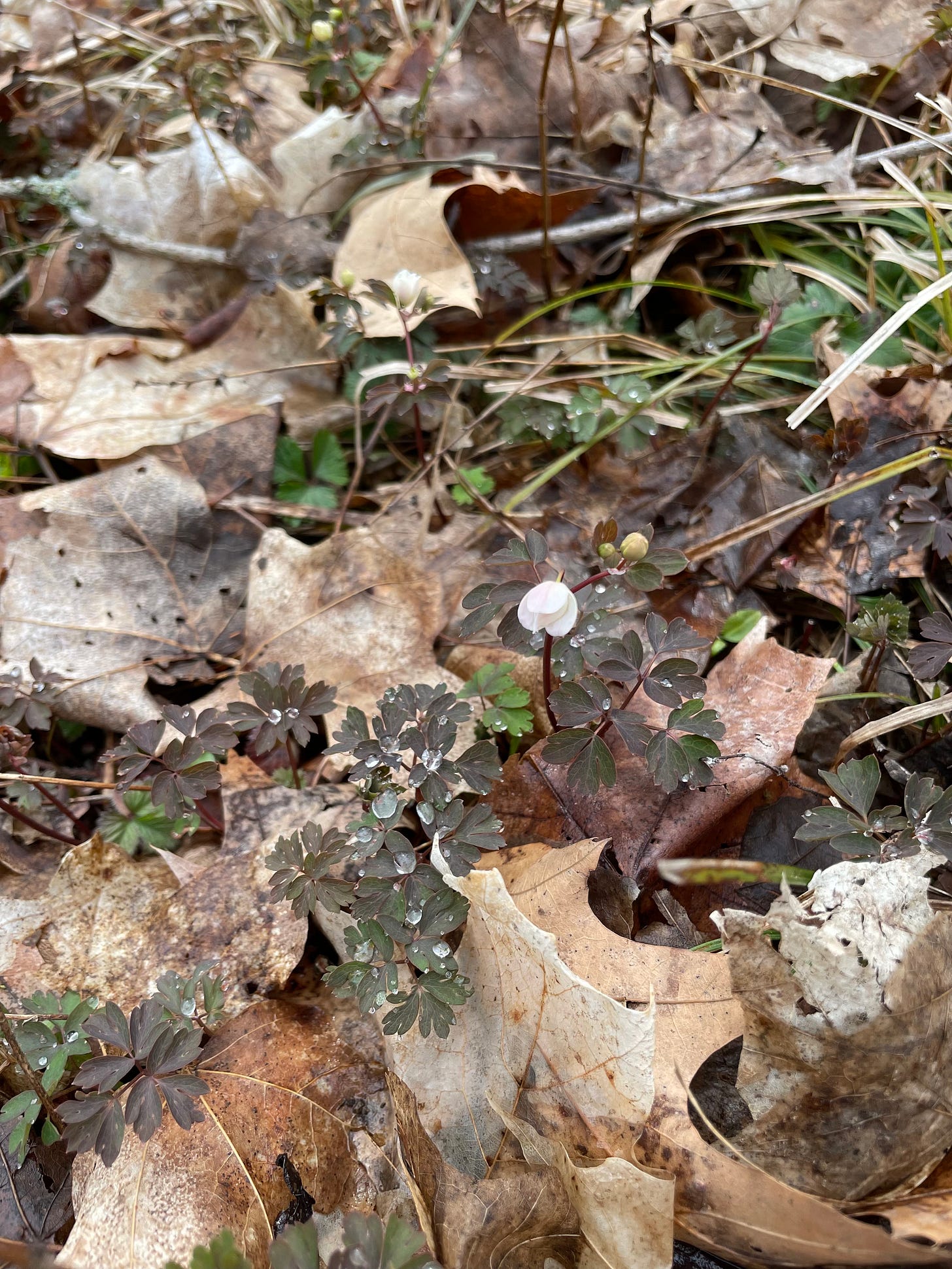
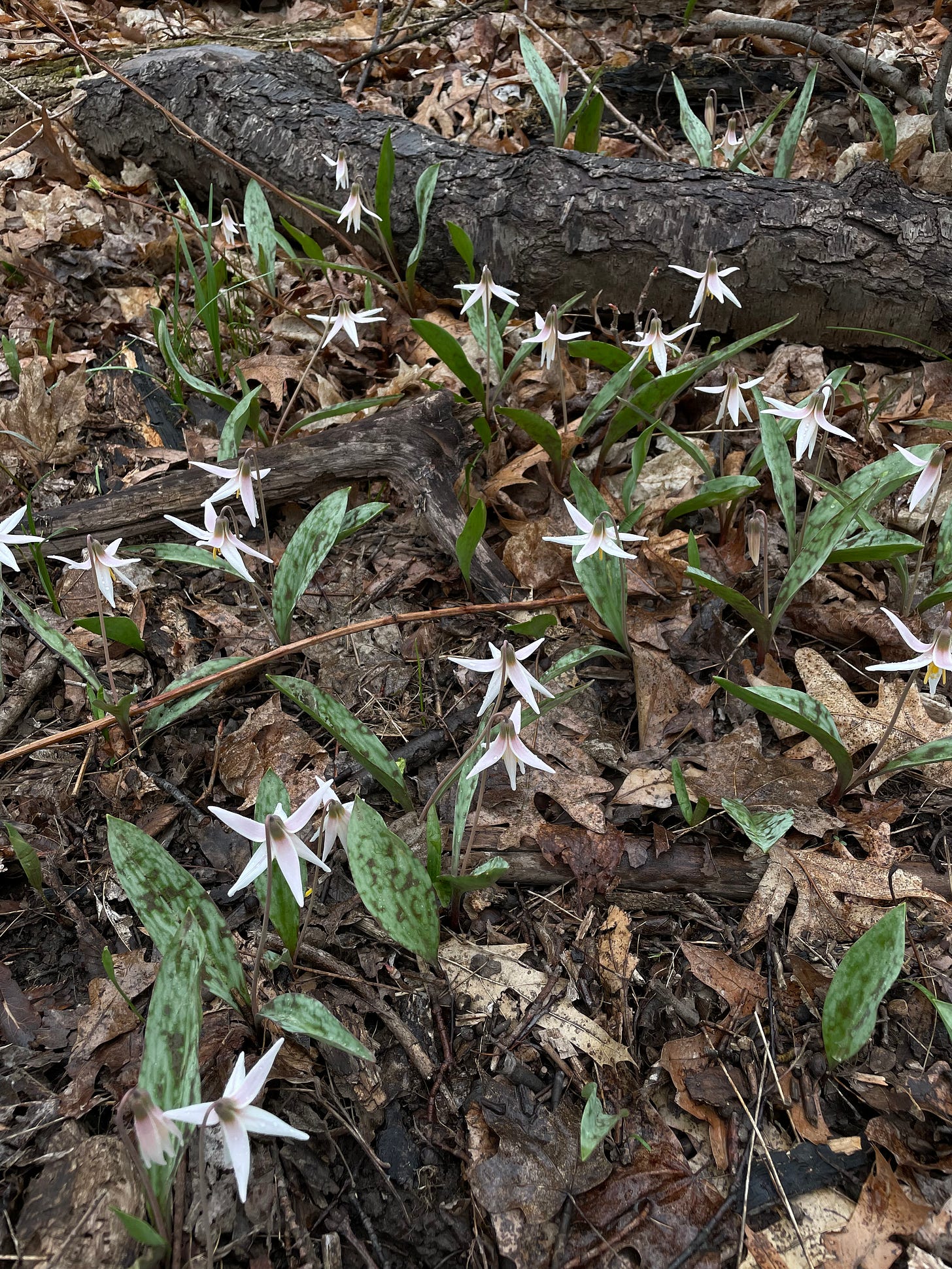
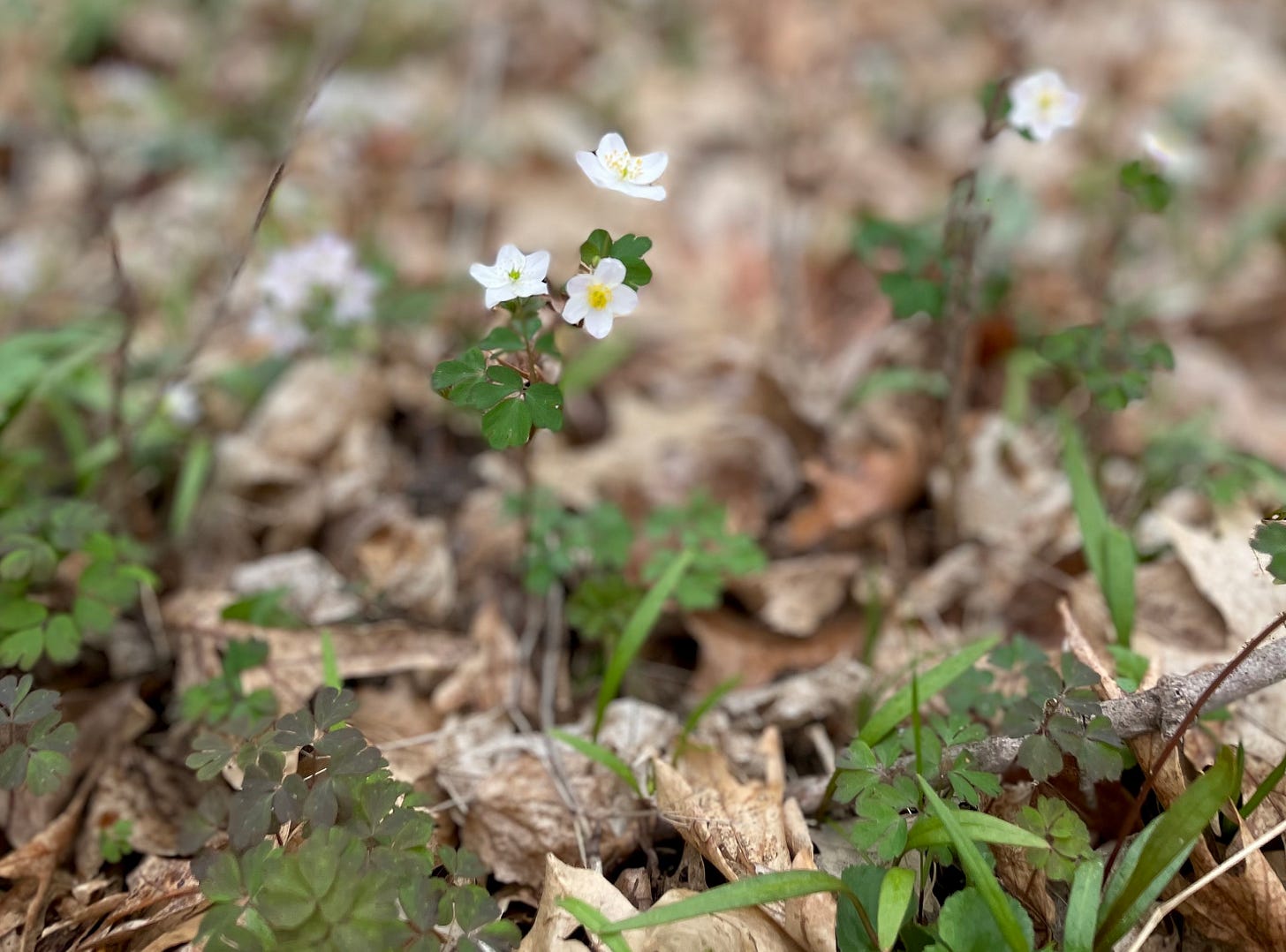

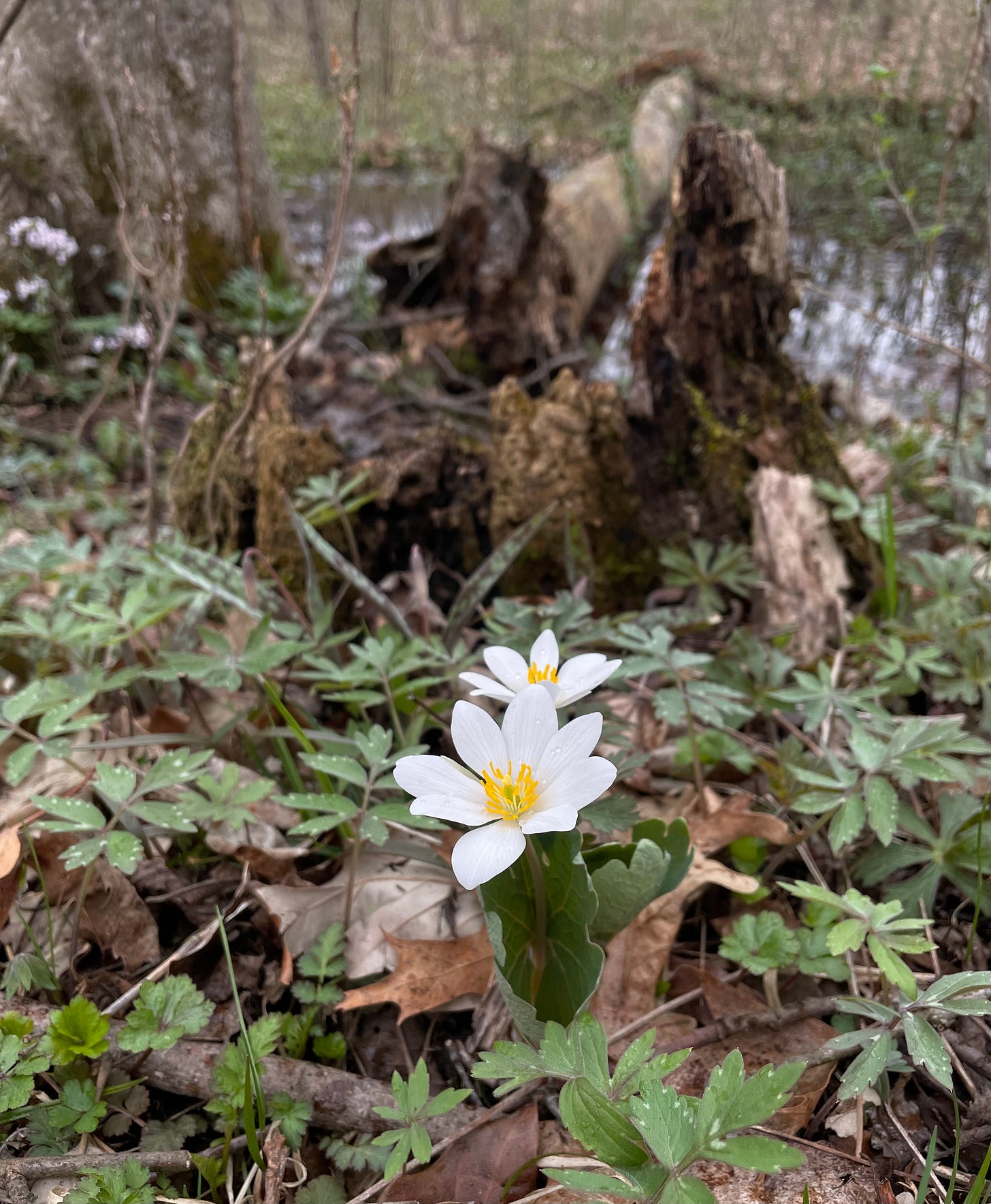
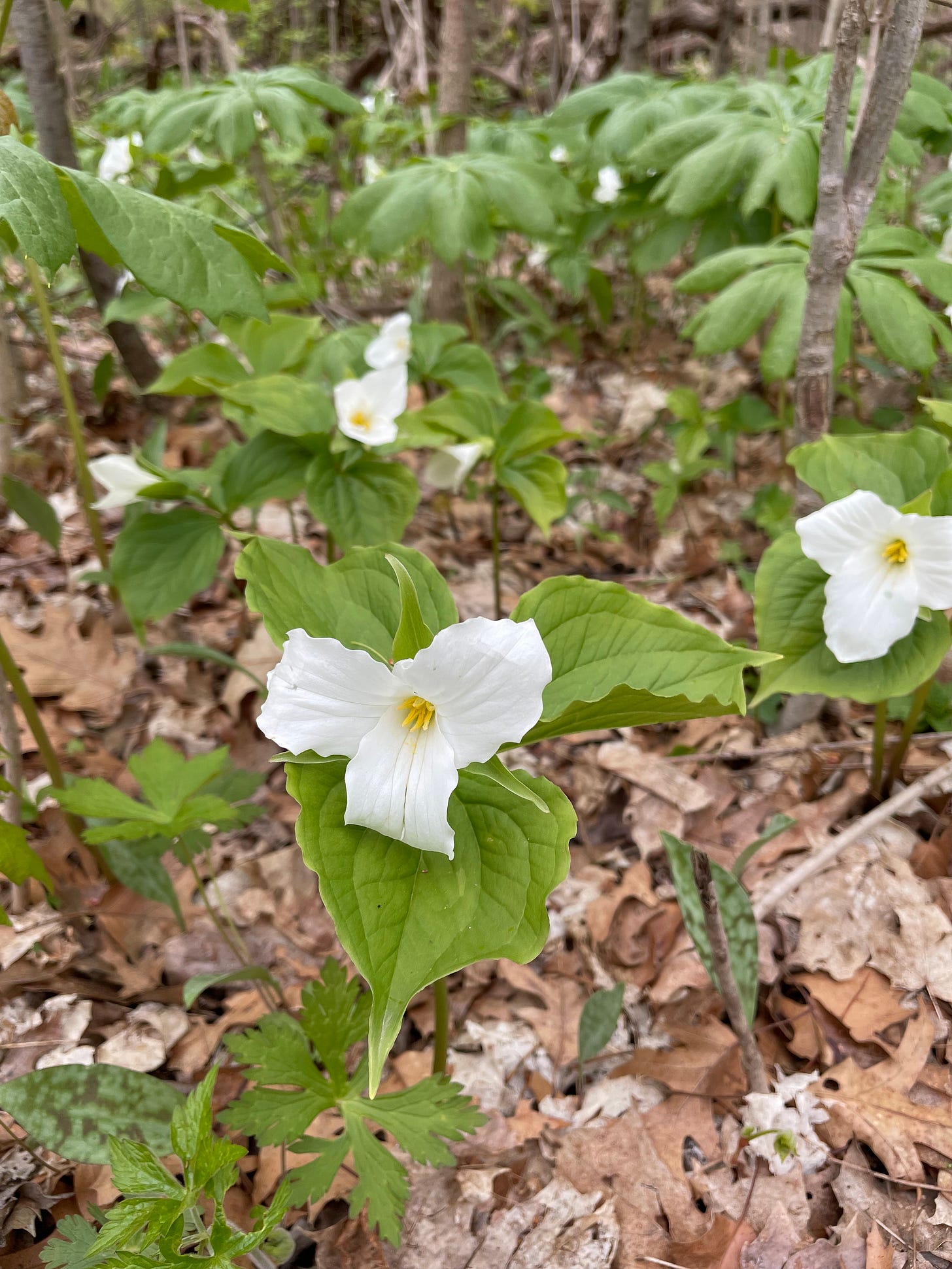

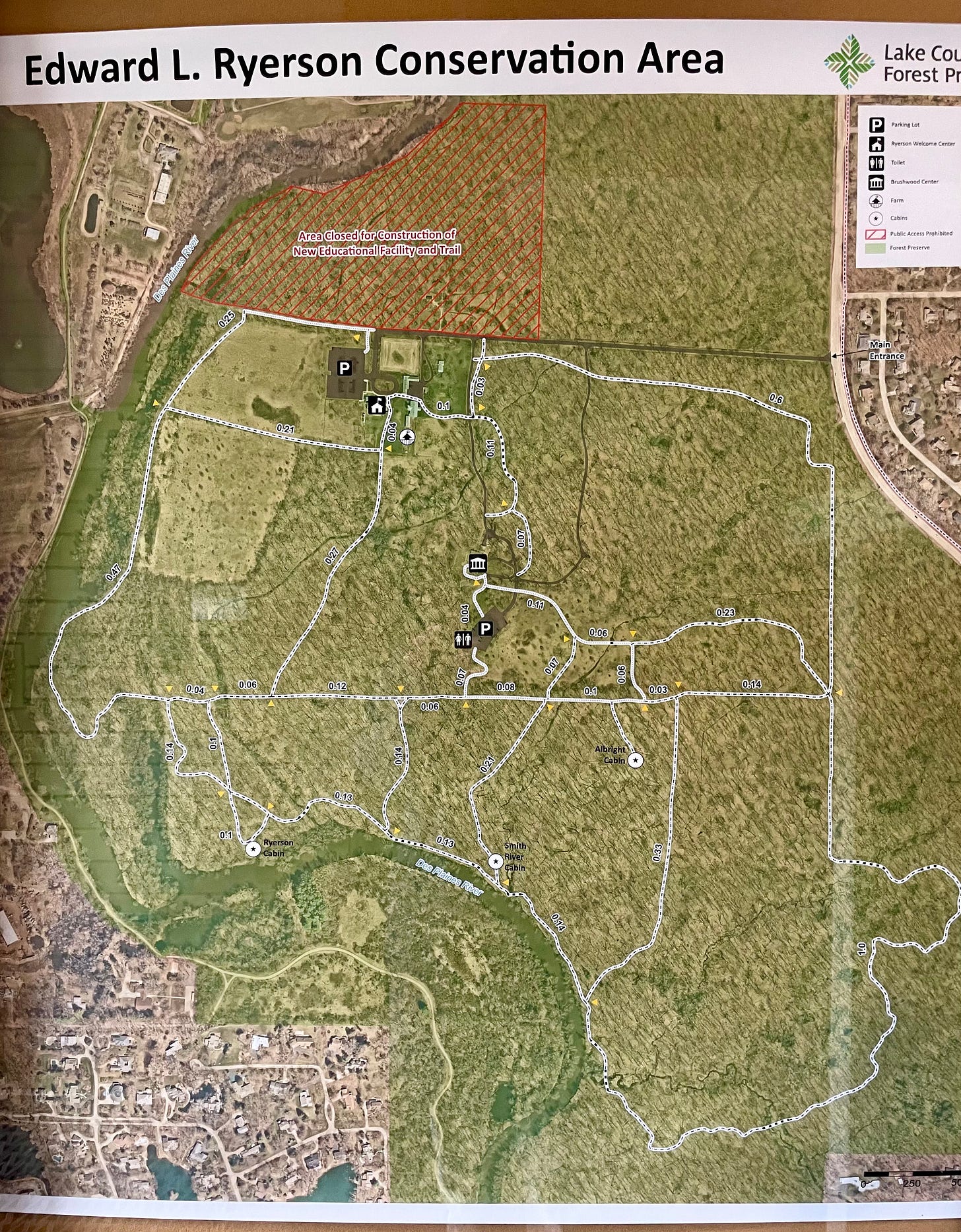

hooray for flowers!